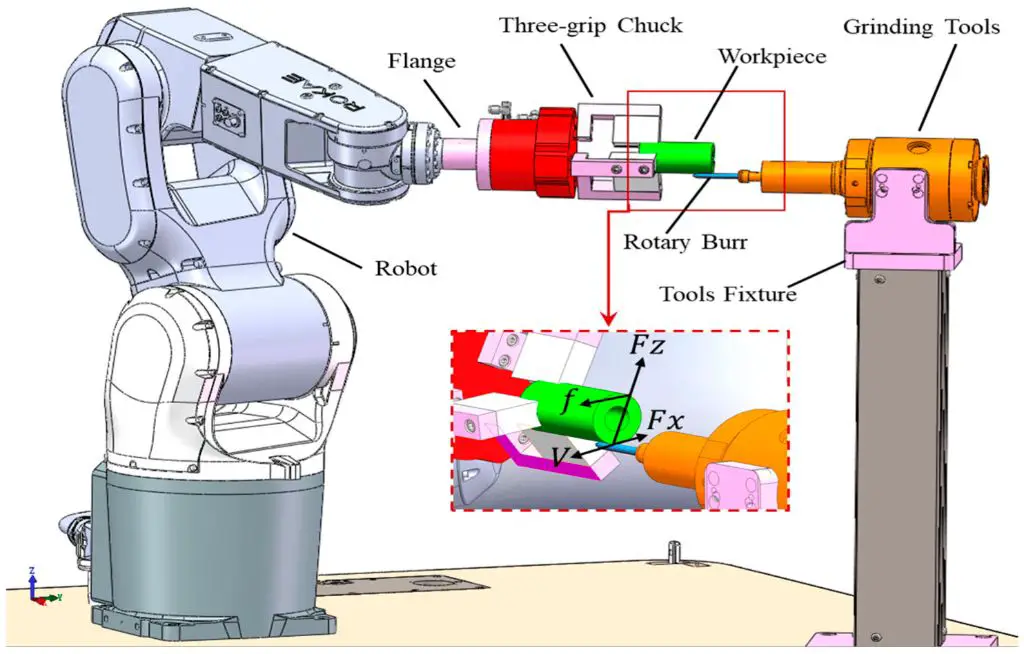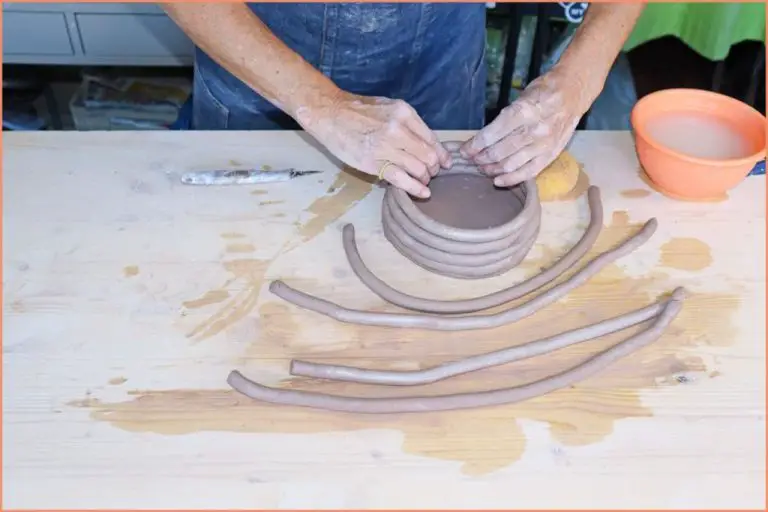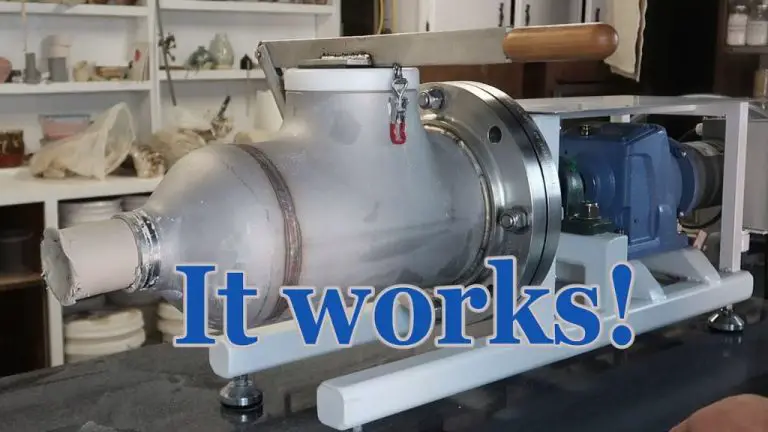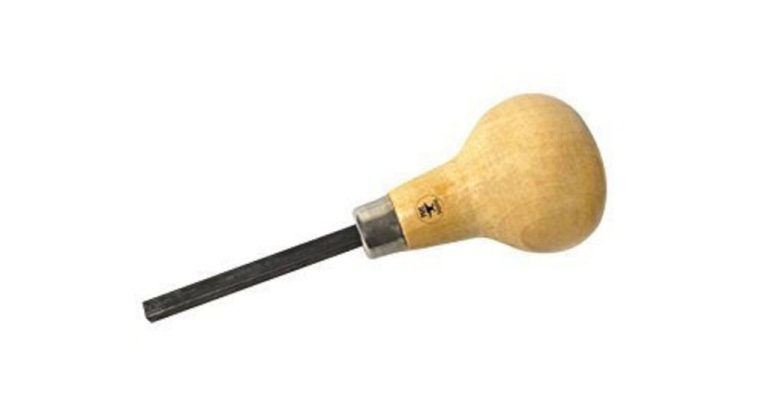Are Bench Grinders Worth It?
What is a Bench Grinder?
A bench grinder is a stationary grinding machine typically mounted on a workbench or pedestal and driven by an electric motor. The motor turns one or two abrasive grinding wheels to grind, sharpen, or deburr metal and other materials (source).
Bench grinders are commonly used to sharpen tools like chisels, screwdrivers, shears, and drill bits. They are also useful for deburring metal parts, cleaning welds, shaping metal, and general metal fabrication. Bench grinders excel at removing small amounts of material quickly and generating an even finish (source).
There are several types of bench grinders differentiated by wheel size, motor power, speed, and grinding method. Common sizes range from 6-8 inches up to 10-12 inches for larger industrial models. Bench grinders may have one or two grinding wheels. Motor power typically ranges from 1/3 to 1/2 horsepower for hobbyist models and up to 2 HP for industrial use. Most operate at 3450 RPM but some may have speed controls. There are also belt grinders which use a spinning belt instead of wheels.
Benefits of Owning a Bench Grinder
A bench grinder offers several useful capabilities that make it a versatile addition to any home workshop. Some of the key benefits include:
Ability to sharpen tools – One of the main purposes of a bench grinder is to sharpen tools like chisels, pruners, lathe tools, drill bits, and more. The grinding wheels allow you to reshape and hone the cutting edges of blades and bits to restore sharpness.
Deburring and shaping metal – The grinding wheels on a bench grinder spin at high speeds, which generate enough force to smoothly deburr and shape pieces of metal. This allows you to refine and finish metal parts and edges.
Polishing and buffing – With the right accessories like polishing and buffing wheels, a bench grinder can also be used for polishing metal surfaces to a smooth, shiny finish. The high-speed spinning action helps buff away imperfections.
Overall, the ability to sharpen, deburr, shape, polish, and buff makes a bench grinder an extremely useful addition for any metalworking or DIY tasks. It saves significant time and effort compared to doing these tasks manually. As this article states, “a bench grinder is one of the most useful tools you can have.”
Downsides of Bench Grinders
While bench grinders can be useful tools, they do come with some downsides to consider before purchasing one. Some of the main downsides include:
Cost – Bench grinders can range in price from about $50 for basic models up to $500 or more for heavy duty industrial models. For hobbyists or DIYers who only need to sharpen tools occasionally, the cost may be harder to justify compared to just using a hand file.
Learning Curve – Using a bench grinder takes some knowledge and practice to master. Improper grinding technique can generate too much heat and ruin tools. New users need training and hands-on experience to get the hang of using a bench grinder properly. Consult the owner’s manual and online tutorials when first learning.
Safety Concerns – As with any power tool spinning at high speeds, bench grinders pose some safety risks. Fingers can become caught in the grinding wheel and various eye injuries may occur from sparks or flying debris. Proper protective gear like safety glasses and gloves are a must. Loose hair/clothing and any dangling jewelry should also be secured before using a bench grinder.
Types of Projects Suited for a Bench Grinder
A bench grinder is a versatile tool that can be used for a variety of projects involving metalwork, woodwork, and jewelry making. Here are some of the common uses for a bench grinder:
Metal Fabrication
Bench grinders excel at shaping, sharpening, and smoothing metal parts and tools. The high-speed grinding wheels make quick work of removing material from steel and other metals. Common metal fabrication tasks suited for a bench grinder include:
- Sharpening drill bits, lathe tools, saw blades, knives, and other cutting tools
- Deburring metal parts
- Grinding welds smooth
- Contouring and beveling metal edges
- Polishing small metal components
Having a bench grinder in your shop greatly expands your metal machining capabilities (sources: https://www.pinterest.com/courtwayne/bench-grinder-ideas/, https://www.pinterest.com/courtwayne/bench-grinder-ideas/).
Woodworking
Though most often used for metal, bench grinders are also useful for certain woodworking tasks. The coarse grinding wheel can shape and smooth hard woods aggressively. A bench grinder allows quick sharpening of woodturning chisels and woodcarving gouges. The buffing wheel is great for applying smooth finishes on turned wood pieces. Bench grinders enable woodworkers to perform metalworking tasks for mixed media wood projects (sources: https://www.pinterest.com/courtwayne/bench-grinder-ideas/, https://www.pinterest.com/courtwayne/bench-grinder-ideas/).
Jewelry Making
For jewelers and other jewelry makers, a bench grinder is useful for grinding, shaping and polishing small pieces. The fine grinding wheel can abrade precious metals without overheating. The buffing wheel brings metal jewelry to a brilliant shine. A bench grinder enables jewelers to customize pieces and achieve fine finishes (sources: https://www.pinterest.com/courtwayne/bench-grinder-ideas/, https://www.pinterest.com/courtwayne/bench-grinder-ideas/).
Features to Look for When Buying
When shopping for a bench grinder, there are several key features to consider:
Wheel Size
Bench grinding wheels typically range from 6 inches to 8 inches in diameter. The larger 8-inch wheels provide more grinding surface and are best for larger projects. Smaller 6-inch wheels are more compact and may be ideal if you have limited work space 1.
Motor Power
Look for bench grinders with motors in the 1/3 to 1/2 horsepower range. More powerful motors will be able to handle tougher grinding tasks without overheating or slowing down 3.
Speed Settings
Variable speed settings allow you to adjust the spinning speed of the grinding wheels for different materials and tasks. Lower speeds are safer for sharpening tools, while higher speeds work better for shaping and deburring metal 2.

Work Light
A built-in work light illuminates the grinding surface for better visibility and safety. Look for grinders with adjustable lights you can position as needed 1.
Accessories
Some grinders come with wire brush attachments, buffing wheels, and tool rests for added versatility. Consider which accessories you may need for your projects.
Bench Grinder Safety Tips
Operating a bench grinder with care and caution is crucial for protecting yourself and others in the workshop. Here are some key safety tips when using a bench grinder:
Always use the proper wheel guards that fully enclose the grinding wheel. The guard should be adjusted as close as possible to the wheel without interfering with the work. Guards prevent fragments from flying out if the wheel breaks and protect you from accidental contact with the wheel.
Wear approved eye protection to shield your eyes from flying debris, sparks, and dust. Safety glasses or goggles marked Z87+ are recommended, as well as a face shield for full-face protection. See bench grinder safety guidelines for details.
Use a spark deflector behind the grinder to control the spread of sparks. Sparks can cause fires or burns. Position the grinder near a wall or aim the exhaust vent away from flammable materials.
Securely clamp the workpiece in a vise or hold it with pliers/clamps. Never hold small items by hand during grinding. Keep hands at a safe distance from the wheel. Let the grinder come to a full stop before adjusting the workpiece.
How to Use a Bench Grinder
Using a bench grinder properly is crucial for safety and achieving the desired results. Here are some key steps to using a bench grinder effectively:
Wheel Dressing
Before using the grinder, it’s important to dress the wheels by applying a dressing tool to knock off any loose grit or embedded debris (Source). This helps ensure smooth, even contact with the grinding surface. Dress wheels regularly as they wear down over time.
Tool Rest Adjustment
The tool rest gap should be adjusted to about 1/16″ to 1/8″ from the wheel. This prevents the workpiece from getting jammed between the rest and wheel (Source). The workpiece should lightly contact the tool rest while grinding.
Sharpening Techniques
Hold the workpiece firmly and use smooth, even motions across the wheel at about a 15-30 degree angle. Apply light pressure and move the workpiece steadily from side to side. Cool the workpiece frequently in water to prevent overheating. Use the coarse wheel for heavy material removal and the fine wheel for sharpening and finishing.
Maintenance and Care
Properly maintaining your bench grinder is crucial for safety and performance. Here are some key maintenance tips:
Wheel balancing – Grinder wheels can become unbalanced over time due to uneven wear or damage. An unbalanced wheel will vibrate excessively at high speeds. To balance the wheel, mount it on the grinder and allow it to reach full speed. If it vibrates, gently tap the heavy side with a wood block or rubber mallet to rebalance it. Repeat until vibration is minimized. Refer to your user manual for full instructions.
Wheel dressing – Glazed or loaded wheels need to be dressed periodically to expose fresh grains and maintain cutting action. Use a dressing tool specially designed for your wheel material and type. Apply moderate pressure as you hold the tool against the spinning wheel. Work from side to side until the wheel is uniform. Avoid overdressing.
Motor oiling – Bench grinder motors have oil ports that allow lubrication of the internal bearings. Refer to your manual for the oil type and frequency, as it varies. Generally, a few drops every 6-12 months is sufficient. Over-oiling can damage the motor. The oil prevents wear and overheating, extending motor life.
In addition to these tasks, keep rest guards adjusted close to the wheels, check wheels for cracks before each use, and clean the grinder after every use. Follow all manufacturer maintenance instructions for safe, reliable performance. Proper care will keep your bench grinder working smoothly for years.
Top Bench Grinder Models
When shopping for a bench grinder, it’s important to consider your budget and intended use to select the right model. Here are some top options for different needs:
Budget Pick: WEN 4276 6-Inch Bench Grinder
If you’re looking for an affordable bench grinder, the WEN 4276 is a great budget-friendly option. At around $60, it provides decent power and performance without breaking the bank. The motor runs at 1/2 HP and 3,450 RPM. While not as robust as pricier models, it’s suitable for most hobbyists and DIYers.
Best for Metalwork: JET 577102 Bench Grinder
For heavy-duty metalworking, the JET 577102 is a top choice. It has a powerful 1 HP motor with 3,450 RPM and an 8-inch diameter wheel. This industrial-grade model has a cast iron base for stability when grinding metal. The adjustable tool rests also provide optimal sparking control.
Best for Woodwork: RIKON Power Tools 80-805 Slow Speed Grinder
When working with wood, a slow speed grinder is best to avoid overheating. The RIKON 80-805 has a 1/2 HP motor that runs at 1,725 RPM. The 8-inch aluminum oxide wheels are well-suited for sharpening woodworking tools. It also has a removable spark guard to contain debris when grinding metal.
The Verdict: Are Bench Grinders Worth Buying?
When considering whether a bench grinder is worth purchasing, there are a few key pros and cons to weigh:
Pros:
- Bench grinders are versatile tools that can sharpen, deburr, polish, and shape metal, wood, and other materials.
- They save time compared to manual sharpening and sanding.
- Bench grinders remove material quickly and give a consistent finish.
- Having a dedicated grinding/sharpening station keeps the mess contained.
- Quality bench grinders can last for many years with proper care.
Cons:
- Bench grinders take up space and need to be permanently mounted.
- The grinding process throws sparks and debris.
- Safety equipment like eye protection is required.
- Improper use can generate too much heat and ruin temper on tools.
- Good bench grinders are an investment, with costs from $100 to over $500.
In summary, a high quality bench grinder is worth buying for any hobbyist, DIYer, or professional who works frequently with metal, wood, or masonry. The time savings and versatility make up for the space required and safety precautions. However, a bench grinder may not be worthwhile for very light or occasional use. Look for a grinder with features like adjustable tool rests, eye shields, spark deflectors, and a reliable motor in your price range.






